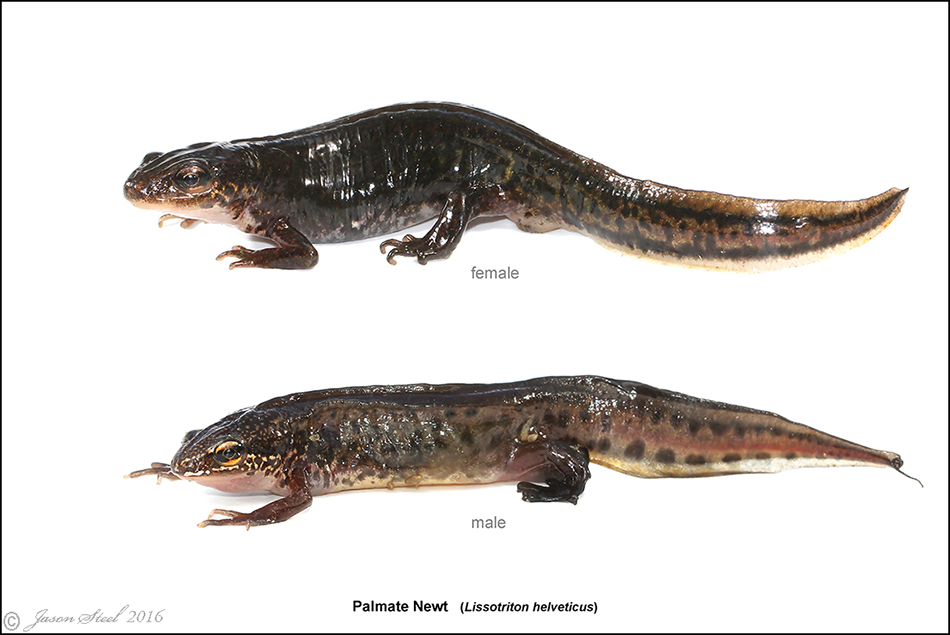
Scientific Name: Lissotriton helveticus
Conservation Status: Least Concern (IUCN Red List)
The Palmate Newt, a delicate and subtle species, is a common yet enchanting resident of ponds and wetlands. Its adaptability makes it a frequent visitor to garden ponds across the UK.
Palmate Newts are found in a range of freshwater habitats, including ponds, marshes, and slow-moving streams. They thrive in clean, shallow ponds with minimal disturbance and plenty of aquatic vegetation. To make your garden pond more attractive to Palmate Newts, avoid introducing fish and ensure a mix of submerged plants like ranunculus aquatica and marginal plants for cover and breeding.
For expert advice on native aquatic plants, visit Aqua Eden to explore our selection suited for supporting newts and other pond life.
Palmate Newts begin their breeding season in early spring (March-May). Males display courtship dances to attract females, who then lay eggs individually on plant leaves. Larvae hatch after 2-4 weeks and develop into juvenile newts by late summer, eventually leaving the pond to live on land. By autumn, most juveniles are fully terrestrial and seek out damp, sheltered areas for hibernation.
Adults typically measure 7-10 cm in length, with males and females of similar sizes. Their lifespan in the wild is around 6-8 years, though some individuals may live longer in ideal conditions.
While the Palmate Newt is listed as Least Concern, it still faces threats from habitat loss, pollution, and changes in land use. Creating and maintaining garden ponds is an excellent way to support their populations.
Palmate Newts are most visible from March to June during the breeding season. Watch for their evening activity, especially around dusk.
This species is smaller and less conspicuous than the Great Crested Newt. Males develop a thin filament at the tip of their tail and webbing on their hind feet during the breeding season. Both sexes have smooth skin and a pale underside, often tinged with pink or yellow. Their back is typically olive-green to brown.
To encourage Palmate Newts, consider these tips:
Visit Aqua Eden for a wide range of plants and advice to create a newt-friendly garden pond. By making these adjustments, you’ll not only support Palmate Newts but also enhance the biodiversity of your outdoor space.
You can learn more about this fantastic newt from great charities such as FrogLife

Aqua Eden, Jordans Courtyard,
Ilminster, TA19 9PY
Open Tue-Fri 10am – 3pm
check social media before travelling for any changes
hello@AquaEden.co.uk
We’re the South West’s newest Water Garden Centre and Design Studio, nestled in the heart of Jordans Courtyard, Ilminster, just off the A303 and J25 of the M5. Whether you’re looking to enhance an existing water feature or create a brand new oasis, we’re here to inspire, educate, and empower you on your water gardening journey. Our friendly, knowledgeable team is passionate about helping you bring your watery dreams to life, and we’re with you every step of the way.
If you’d prefer to leave it to the professionals, our partner company, DU Waterscapes, brings years of experience and expertise to the table. As award-winning water feature artists, they offer expert maintenance and custom installations tailored to your needs. Experience their stunning displays at Aqua Eden and discover how they can bring a slice of Eden to your home. Learn more on their website!